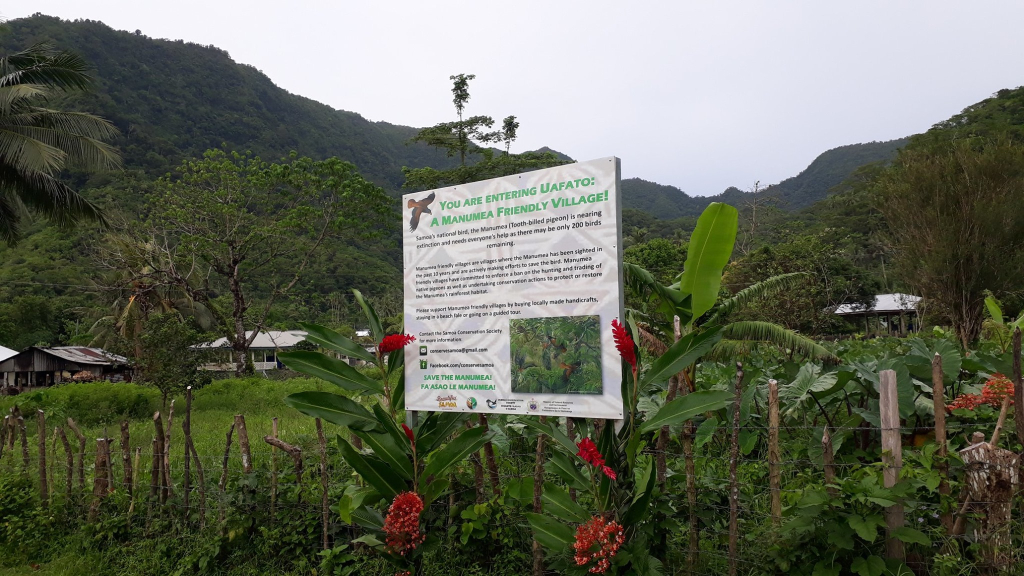
4 May 2022, Apia, Samoa – The invasion of species from beyond our shores is one of the leading causes of biodiversity loss in the Pacific and managing them can be a huge cost to Pacific island economies.
Sustainable ways to finance the prevention and response to biological invasions were discussed today in an event hosted by the Secretariat of the Pacific Regional Environment Programme (SPREP. The event presented ways to create sustainable financing for invasive species management and launched the new publication, Create Sustainable Financing for Invasive Species Management.
The largest cause of extinction of single-country endemic species in the Pacific islands is the impact of invasive species. Invasive species also severely impact Pacific economies, the ability to trade, sustainable development, health, ecosystem services, and the resilience of island ecosystems to respond to natural disasters and climate change.
“Effective, long-term invasive species management programmes are dependent on sustained resourcing including sufficient financing” said David Moverley, Invasive Species Adviser with SPREP. “Currently programmes largely rely on short-term project funding and are often competing with a myriad of other national priorities”.
Sustainable forms of financing allow for greater certainty about the future of invasive species management and allow for more robust financial planning. of invasive species management actions. Sustainable financing may also provide greater independence in defining project priorities.

“Based on a study of financing options suitable for the Pacific islands, we’re launching a new guide for national managers on ensuring access to sustainable sources of financing to address the continuing threat of invasive species,” said Mr. Moverley.
This guide, Create Sustainable Financing for Invasive Species Management, provides insight into the process of planning sustainable financial flows and provides example mechanisms for the Pacific island context, specifically directed at those raising funds for long-term management. The publication draws on a larger body of research conducted by a team of experts: Sean Weaver (Ekos), Lucie Greenwood (The Connective), Mary Anne Teariki (independent researcher), and Ian Short (The Connective).
“Generally, people understand that if we do not spend money maintaining the roads, the roads will degrade, and the benefits of road transport will decline. The same kind of thing happens to ecosystems when invasive species thrive and damage those ecosystems, reducing the supply of provisioning, supporting, regulating, and cultural services delivered for free by nature,” said Sean Weaver, CEO of Ekos. “Just as maintaining roads requires money that is justified with an efficient budget, invasive species control requires an efficient and effective budget.”
Managing invasive species makes economic sense. Between 1960 and 2020, the costs of damage caused by invasive species worldwide reached at least USD 1,131 billion, more than 12 times the amount spent on invasive species management, according to a study published in Science of the Total Environment this year. The damage costs would have exceeded USD 3,424 billion if no management action had been taken. Every USD 1 of management was estimated to reduce damages by about USD 54.
“Prevention and early response are always going to be our best and cheapest options for managing new invasive species,” said Bradley Myer, Project Manager – Regional Invasive Species Project with SPREP. “But whether its preventive biosecurity or long-term management, actions to manage invasive species need to be part of a well-resourced, long-term plan.
About the series:
Create Sustainable Financing for Invasive Species Management is the sixteenth publication in the Pacific Invasive Species Battler series from the Secretariat of the Pacific Regional Environment Programme. The series provides national environmental managers with tools and guidance for cost-effective and sustainable responses to invasive species.
The GEF 6 RIP is funded by the Global Environment Facility, implemented by the United Nations Environment Programme, and executed by the Secretariat of the Pacific Regional Environment Programme. The Project works primarily in the Marshall Islands, Niue, Tonga, and Tuvalu and has a regional component. Implementation of the GEF6RIP is supported by the Pacific Regional Invasive Species Management Support Service.
For more information:
Please contact Mr Bradley Myer, [email protected].
The Pacific Regional Invasive Species Management Support Service can be explored online at https://www.sprep.org/prismss